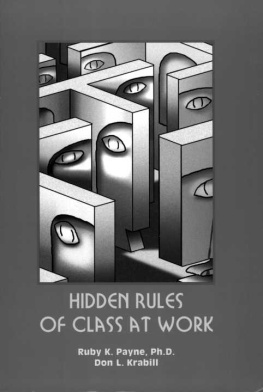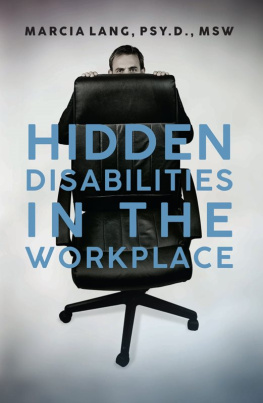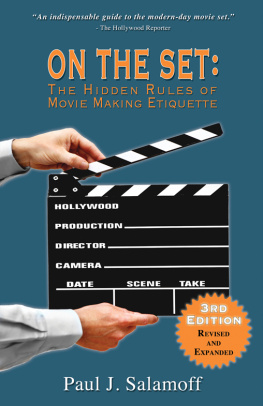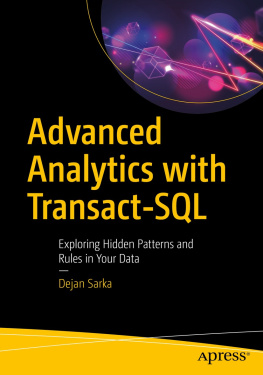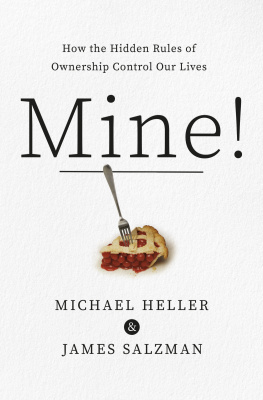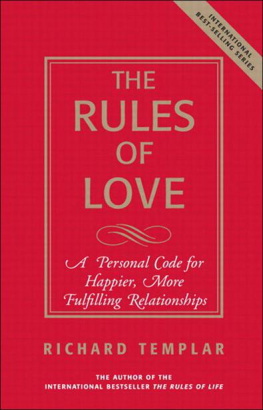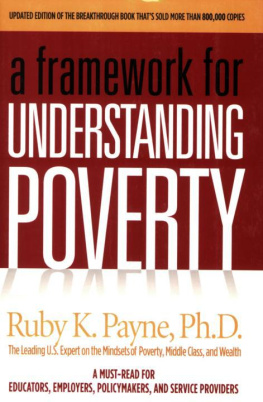HIDDCN Rues Of CLASS
AT WORK

Ruby K. Payne
Don L. Krabill
HIDDCN Rues of CLASS
AT WORK

TABLE OF CONTENTS
Chapter 1 13
Chapter 2 23
Chapter 3 57
Chapter 4 75
Chapter 5 83
Chapter 6 89
Chapter 7 107
Chapter 8 123
Chapter 9 129
Chapter 10 137
Chapter 11 145
Chapter 12 155
Chapter 13 163
INTRODUCTION
PURPOSE OF THE BOOK
The purpose of this book is to help those of you who supervise people. This book provides tools for the following:
1. Identification of an individual's strengths and weaknesses by looking at his/her resources.
2. An understanding of how economic class influences opportunities to develop resources.
3. An understanding of how economic class influences - often subtly yet significantly - behaviors that show up in the workplace. (Many of the behaviors an individual uses come out of the economic class in which he/she was raised because survival demanded it.)
4. An understanding of how the levels of an organization reflect the hidden rules of class.
5. Tools that will help you develop employees to function at the level of the organization to which you either have promoted them or at which you expect them to function.
6. Tools for yourself that will assist with your own promotion to the level you wish to achieve.
7. Tools to determine for whom training dollars will have the most payoff.
Here is a mental model that we initially might use:
In this oversimplified triangle, an individual brings to an organization three things: resources, connections (relationships), and hidden rules. The organization also has those three things: resources, connections, and hidden rules. The successful fit of the individual into the organization is largely determined by how well these three elements from the individual mesh with those of the organization.
It's important to note that most supervision comes from midmanagement types of positions, which generally follow the hidden rules of middle class. This book has no intention of judging one class as better than another. Rather, different realities demand different types of behaviors that, in turn, generate hidden rules. The ability of an individual to fit into a work environment and be productive in that environment is crucial to understanding workplace success.
This book's principal objective is to identify and articulate a number of issues that are alive in the workplace - but that seldom have been articulated previously. Hidden Rules of Class at Work is not meant to cover all variables in the work setting. Its raison d 'titre is more modest. The book is simply intended to look at how issues of class determine one's ability to survive in the workplace - and to offer the tools necessary to move to a different level of the organization if one so desires.
In 1995 I (Ruby Payne) wrote a book titled A Framework for Understanding Poverty. The book was written primarily for educators who were trying to deal with social-class issues in the public schools. Several of the participants in the workshops who have a spouse in the corporate environment asked if such a book also could be written for people in business.
Subsequently I teamed up with my cousin, Don Krabill, who owns companies in the United States and England, and we prepared this book.

ABOUT THE RESEARCH STUDY ...
Hidden Rules of Class at Work is based on a research study that Don and I did. We developed the resource quotient as an assessment instrument and distributed it to about 250 business people in the United States, targeting mid-management positions or higher. A total of 111 surveys were returned, two of which were incomplete.
The Krabill/Payne Resource Quotient instrument is reliable. Using Cronbach's Coefficient Alpha Scale, the instrument scored .8384 for reliability. (A score of .70 or higher is considered to be very good for this type of instrument.) The Spearman-Brown formula gives the Krabill/Payne quotient an even more impressive score of .895 5 for reliability. (For more details about our research, see the Appendix, along with brief summaries at the end of Chapters 3-12.)
Each chapter gives the research findings for a particular aspect of the instrument, as well as cites other studies that corroborate our findings (see also Research Notes for more of the latter). In addition, each chapter offers interventions that an individual can use to build or strengthen particular resources.
This book is not intended to be "the" definitive statement on the very large topic of resources in the workplace. Rather, its aim is to begin the discussion of how class-related factors and hidden rules impact - often in surprising and significant ways - the working environment in North America.
CHAPTER
a
ASSESSMENTS
Assessments
To begin to understand the information in this book, it will be helpful for you, the reader, to take the following quizzes and make the following selfassessments.
Could you survive in an unskilled-labor job? (usually is minimum wage or slightly higher)
1. I know how to physically fight and can hold my own in a fight.
2. I know where the best local bars are.
3. I will quit on the spot if the boss makes me mad.
4. I can go without work for periods of time and survive.
5. I know how to file for unemployment.
6. A phrase I use is: "I was looking for a job when I found this one."
7. I often must take personal phone calls during work time.
8. At work I openly discuss my sex life and the fights I have with family members.
9. If I'm interested sexually in someone at work, I make comments and openly pursue the person.
10. I know how to ask for an advance on my paycheck.
11. I will openly discuss the disagreements I have with my boss or the flaws I see in my boss.
12. I often use casual speech (register) at work.
Could you survive in beginning supervision? (usually involves responsibility for a group of people without final say about hiring and firing)
1. I can work side by side with the crew to get a job done without losing the authority I have.
2. I know how to stay out of the discussion when everyone else is complaining about the boss.

